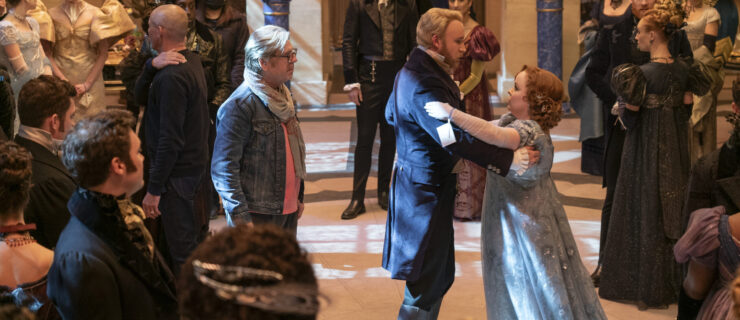Funky Faces

Tabitha and Napoleon D’umo may pull a goofy face from time to time—but only when appropriate! (by Jennifer Johnson)
You may have fierce hip-hop moves—but do you have the face to go with them? When it comes to hip hop, the right attitude can make or break your performance. Skilled dancers use their facial expressions to bring choreography to life, but sometimes figuring out exactly what to do with your face can be tricky. Should you glue on a goofy grin or go for a smug smirk? Can you pull off a classic “stank face”? Should you? We asked some of hip hop’s hottest dancers, teachers and choreographers for their tips on how to make powerful, effective expressions part of your dancing.
“Smiling is OK! Hip hop doesn’t have to be hard all the time. But whatever face you use, it needs to be confident. Weak doesn’t work in hip hop.” —Leslie Scott, hip-hop teacher at EDGE Performing Arts Center and Millennium Dance Complex in L.A.
“A ‘stank face’ is great if you’re in a crew—but it often doesn’t work in the commercial dance world. It can come across as mean or ugly if it’s not natural. Work on achieving that kind of intensity without sticking on a stank face.” —Tabitha D’umo, choreo-grapher on “So You Think You Can Dance”
“Don’t think about it too much. That can make your expressions seem contrived and stiff.” —Napoleon D’umo, choreographer on “SYTYCD”
“Don’t look like a deer in the headlights. Another look to avoid? The one that says, “I don’t want to be here!” That’s one of the worst things you can do.” —Bryan Tanaka, commercial dancer
“Have an intention when you dance. I’m usually really animated, but I don’t think specifically about my face as much as I think about the lyrics of the song I’m dancing to.” —LS
“There’s a fine line between feeling it and faking it. Hip hop is about letting go and connecting your whole body to the music, face included.” —TD
“Steer clear of overly sexy faces. That’s not what hip hop is about. I’d rather see a teen dancer smiling because she’s genuinely enjoying her performance than one who’s trying to look provocative.” —LS
“Remember that dance is an unspoken language. You need to tell a story with your face as well as your body. Pay attention to how other dancers use their expressions; then find what works for you.” —BT
“Be authentic. I have my students stare at their faces in the mirror while I ask questions that trigger memories, like, ‘How do you look when you’re heartbroken?’ or ‘How do you look on prom night?’ That way, they learn to connect their facial muscles to real emotion instead of just mimicking facial choreography.” —LS
“Film yourself during rehearsal. That’s the best way to really see what your face looks like while you dance. Cameras don’t lie.” —ND
“Your face can make or break your dancing. It’s what sets the professionals apart from the rookies. I’ve worked with some artists who may not be the best dancers but their performance faces are amazing and fun to watch.” —BT
What’s a
“stank face”?
Leslie Scott says: “The ‘stank face’ is an exaggerated frown, with the mouth turned down. So many people do nothing but that. It’s not always the best way to engage an audience.”




